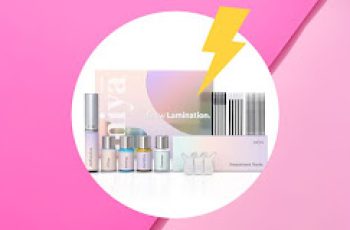Hold Up—Do We Need to Be Concerned About Filler Migration Now? Experts Weigh In
With the uptick in patients getting facial fillers in recent years, it’s no surprise that we’ve also seen an uptick in “bad” filler—horror stories about overfilled areas on the face or filler migration (which can often be one and the same). And just like any other topic that goes viral on social media, filler migration has spread to the rest of the internet.
But is it as common as the 83 million posts on TikTok claim? In short, no. That said, filler migration is always a possibility, so we asked board-certified plastic surgeon Jeffrey G. Lind II, MD, and board-certified nurse practitioner Vanessa Coppola, APN-C, FNP-BC, to discuss how to identify and problem-solve the issue, should it happen to you. Read on for a complete breakdown of filler migration.
What Is Filler Migration?
“Filler migration is when dermal fillers, typically used in the lips and cheeks as well as other areas of the face, migrate or move from the intended injection site,” sums up Lind.
While many FDA-approved fillers work on gel formulas specifically designed not to move, outside factors can get in the way.
How Can You Tell Filler Has Migrated?
Pending the severity of filler migration, it can be clear as day to the naked eye. The most obvious case is typically lips. “We most commonly see this in the perioral area, which is the area around the lip,” says Coppola. The filler will migrate from the red body of the lip into the surrounding area, she explains. “You can sometimes see this by the protuberance of the lip from the profile, the loss of definition to the vermillion border, and sometimes… a whiteish cast to the skin where the filler has migrated.”
Identifying filler migration in other areas of the face can be more complicated—as Coppola explains, it’s a subtle art. “In the tear trough area, for example, this can sometimes result where filler has migrated to the surface of the skin, and it looks almost like a tootsie roll, which is an area of discontinuity of fullness under the eyes where it is not contiguous from the lower lid to cheek junction,” she explains.
All that said, it’s important to make an appointment with a skilled provider to identify if your filler has, in fact, shifted before jumping to any conclusions, both experts note.
What Causes It?
There are multiple different factors—some natural and some not—that can lead to filler migration.
Overfilling: For starters, the experts note that overfilling an area of the face can lead to filler migration; generally, technical errors are often the root of migration issues. To avoid this, always work with a board-certified injector experienced in the field.
Injection at the wrong depth: In that same breath, injecting filler at the wrong depth can also lead to migration. “A very detailed and intimate understanding of facial anatomy… is necessary to avoid adverse events such as filler migration, which is aesthetically displeasing,” explains Coppola. “If you inject filler in an area of high muscle activity superficially, this can also cause the filler to migrate to the surface of the skin. We commonly see this both in the tear trough area [and] in the lips.”
With all that said, it should also be noted that migration can occur due to something as simple as repeated muscle movement or getting filler too often. The experts note that layering filler in the same area repeatedly over time can lead to issues, as well as the type of filler used and the innate anatomical nuances of that individual.
How Can It Be Treated?
If you’ve identified filler migration and aren’t sure what step comes next, don’t fret. You have options—the first being to do nothing. If the migration isn’t cosmetically unappealing or physically uncomfortable, you can simply wait it out. Hyaluronic acid fillers typically dissolve in six months (some closer to a year).
The second option for someone looking for an immediate fix is to dissolve the filler. “[Assuming it is a hyaluronic acid-based filler], an injector can dissolve the filler with an injectable medication called hyaluronidase,” explains Lind. “However, this may require several sessions.”
It should be noted that dissolving filler can be an uncomfortable process, depending on your pain tolerance. As someone who once had to dissolve chin filler, I can personally attest that the feeling was not ideal and would describe it as a sharp, burning sensation. That being said, it was, without a doubt, worth it for the quick fix.
Can It Be Prevented?
Yes and no. There are best practices to follow that will help lead a patient to the ideal filler outcome. “You should always have your injections performed by an experienced injector,” Lind emphasizes. “The injector should avoid placing too much filler in one location, as this can potentially spill over into adjacent areas—the second most likely explanation for ‘filler migration,’ with the first being poor filler placement by the injector, to begin with. The injector must also use the right filler for the right indication.”
Lind also notes that you should avoid sleeping on your face for 48 hours after getting filler to prevent unwanted migration or distortion.
It’s worth noting that both of our experts told us that, despite what you may see on social media, filler migration is not super common. Following the above advice (along with proper aftercare) should typically lead to a positive experience and results.
The Final Takeaway
”Soft tissue fillers are a great tool for facial rejuvenation if performed by experienced injectors,” says Lind. “Filler migration is likely much less common than is reported on social media. The injector technique, poor judgment, and technical error are the most likely causes for what patients are reporting as ‘filler migration.'”
If you’re looking to get filler but are concerned about migration, our experts offer some advice: Do your homework. Beyond the certifications, research your injectors before working with them. Do they have long-term experience? Good reviews? Patient before and afters that are appealing to you? Get a consultation, and don’t be afraid to ask questions.
DQH Knowledge drop: In your 20s, your skin cell turnover decreases. (Cell turnover is a key component in keeping your skin youthful.) You know what else slows down? Your collagen production. Starting in your 20s, collagen decreases by about 1 percent per year. Should you want to prevent fine lines and wrinkles, start by eliminating behaviors that contribute to premature aging. “If it’s bad for you, it’s bad for your skin,” says dermatologist Michel Somenek.
“Cigarette smoking reduces blood flow to the skin and causes premature wrinkling and a dull skin texture. Making the repeated pursed motion to inhale can also cause smoker’s lines. Alcohol and recreational drugs are toxins for the skin that damage its cellular structure and DNA,” Somenek tells us. “The faster you eliminate vices while you are young, the better chance your skin and body have to recuperate.” Also, adopting an anti-aging routine in your 20s is key. After all, the best offense is a good defense. We spoke to Somenek and experts Joshua Ross and Audrey Kunin to find out more.
Keep reading for the best anti-aging products for your 20s, according to skincare professionals.
Sunscreen
“We all know that the sun is the number one cause of skin aging and starting the prevention in your 20s is very important,” Ross says. “The majority of your sun damage won’t start to appear until you’re in your 30s, so don’t wait until you see it surface or you’ll be behind the curve. Stay ahead of it with a good-quality zinc-based sunscreen worn daily.”
Farmacy Green Defense Daily Mineral Sunscreen
An invisible sunscreen with SPF 30, plus botanical extracts meant to protect skin with tons of antioxidants. Bonus: It’s clean and fine to use under makeup.
Bareminerals Complexion Rescue™ Tinted Moisturizer Broad Spectrum SPF 30
Although we recommend you use your SPF and moisturizer separately, we also understand moments when you don’t have time or energy for that extra step. For those times, this bareMinerals moisturizer is a great thing to have on hand.
Vitamin C Serum
“A great introduction to anti-aging is to start with a vitamin C serum in your morning skincare routine,” Ross says. “It’s a powerful antioxidant that will neutralize free radicals and brighten the skin.” He adds that it’s a great way to counteract the effects of the sun’s harmful rays, which, as previously mentioned, are among the biggest causes of premature aging.
Drunk Elephant C-Firma™ Vitamin C Day Serum
The Drunk Elephant C-Firma is a lightweight serum that promises to give skin a glow by combining the brightening powers of vitamin C with ferulic acid, l-ascorbic acid, and vitamin E. The included sodium hyaluronate is meant to replace hydration loss, so you shouldn’t have to deal with any irritation.
Sunday Riley C.E.O. Rapid Flash Brightening Serum
This potent serum is jam-packed with vitamin C (15 percent, to be exact), which means it’s a potential superstar at both brightening skin and dousing it in antioxidants.
Peptides
Using peptides on your skin has many benefits, says Somenek. “The skin barrier is what defends the body against pollution, UV rays, bacteria, and toxins. It can be damaged by several everyday factors. Using topical peptides aids in building a stronger barrier,” he says. “Peptides comprise elastic fibers, which are a type of protein. These fibers help to make skin appear taut and firm. Peptides can also help repair damaged skin, relieve inflammation, and even out skin tone. Some peptides can kill acne-causing bacteria that is common in 20-somethings.”
Kunin agrees, saying, “Peptides are an excellent entry point for supporting collagen.” She recommends looking for face and eye treatments that contain these collagen-boosting powerhouses.
Charlotte Tilbury Magic Eye Rescue Cream
This Charlotte Tilbury super-emollient eye cream has a base of coconut oil and shea butter (read: it’s incredibly hydrating). Botanicals plus peptides are meant to help reduce dark circles and boost collagen, respectively.
This creamy moisturizer serves up potent collagen-boosting peptides and pycnogenol, and antioxidant-rich vitamin C. “Instead of sitting on top of the skin, peptides penetrate the outer layer so they go deep. The ‘signals’ they send tell the cells to produce elastin and collagen, which are needed for youthful-looking skin,” explains Somenek.
At-Home Peel Pads
Remember that skin cell turnover fiasco we talked about earlier? One way to help support it is by exfoliating. “Exfoliation is important to help keep skin fresh and luminous,” Kunin says. She recommends using at-home peel pads as an easy and effective way to exfoliate.
“The goal in your 20s is to fight the slowing pace of cell turnover. It is wise to use products that gently exfoliate, yet still remove oil and other impurities. Products that have Alpha Hydroxy Acids (AHA) or Beta Hydroxy Acids (BHA) are a good choice.”
According to Somenek, you should only exfoliate two to three times a week. “People of all ages are guilty of over-exfoliating and that can be too much of a good thing,” he says.
Dermadoctor Kakadu C Intensive Vitamin C Peel Pad
A few swipes of this Derma Doctor powerful peel pad promise to leave your skin glowing and smooth, thanks to the seven (yes, seven) types of chemical exfoliants, including AHA and BHA. It also contains vitamin C via Kakadu plum extract for added brightening and antioxidant protection.
KEY INGREDIENTS Kakadu plum extract is sourced from the Kakadu plum, a fruit grown in northern Australia. It contains vitamin C, which restores the skin’s natural barrier, increases collagen production, and soothes irritation.
Dr. Dennis Gross Skincare Alpha Beta® Universal Daily Peel Pads
These are the gold standard of peel pads, with a cult following and over 900 five-star reviews on Sephora. They’re easy to use and contain a blend of anti-aging exfoliating acids.
Emollient Night Cream
“In your 20s, you need to start upping the hydration in your skincare routine. You may have been cautious of over-moisturizing because of acne in your teens, but as you enter your 20s, your skin transitions and becomes drier,” Ross says. “I recommend an emollient night cream added into your evening skincare regimen.”
“Twenty-somethings need to make sure that they are not using creams that will clog their pores and cause excess oil production,” says Somenek. Opt for non-comedogenic products.
Cerave Skin Renewing Night Cream
One great choice is the CeraVe Skin Renewing Night Cream, which is a non-comedogenic night cream that leaves skin soft and glowy. It combines the moisturizing powers of ceramides and hyaluronic acid.
RoC Retinol Correxion Max Hydration Creme
“The best night cream ingredients contain retinol, benzoyl peroxide, and/or salicylic acid or hyaluronic acid. The goal is to moisturize, yet remove excess oil,” says Somenek. This Roc Retinol Correxion cream fits the bill as it contains both hyaluronic acid and retinol so it promises to moisturize while also being non-comedogenic.



